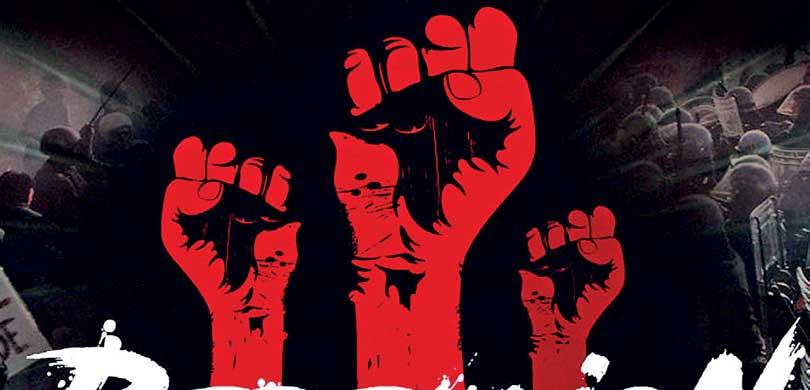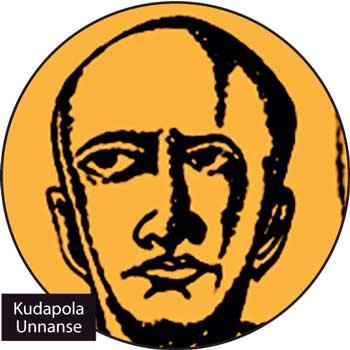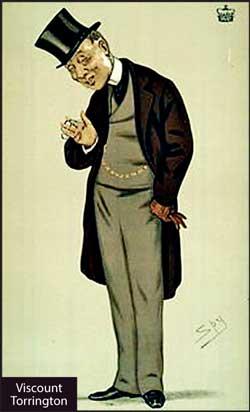04 Jun 2019 - {{hitsCtrl.values.hits}}

 With their annexation of Kandy the British, for the first time in centuries, unified Sri Lanka as a single political entity. The defeat they had encountered in 1803 during the First Kandyan War had convinced them that to conquer the region it was necessary to resort to intrigue, espionage, and expedience. Frederick North’s scruples about stepping into the Kandyan territory in the absence of aggression from the king had, by the time of his successor Maitland’s tenure, withered away. Propaganda disseminated by British forces on the one hand and the king’s own adigars on the other achieved what even a military expedition, made to oust the king in favour of his brother, could not. The amorphous nature of kinship being what it was in the udarata, the deposal of Sri Wickrama Rajasinghe meant that the conquest could not, even with the 1815 Convention, guarantee stability for long. British rule in Sri Lanka broadly falls under three phases: annexation (1796-1815), rebellion (1815-1848), and reform (1848-1945). The age of rebellion ended, if not definitely then to a considerable extent, with the quelling of the Matale rebellion. The latter was perhaps the last uprising of its kind that Sri Lanka under colonial rule would encounter. It was also unique: while previous uprisings had as their head a Nayakkar pretender, the unrest that began in Matale and spread to Kurunegala and Colombo was instigated by two Catholic karava yeomen from the low country. In that sense the Matale rebellion was a peasant’s revolt different in content, character, and temperament to the feudal revolts that had preceded it. Before examining why it was so different, however, it would be pertinent to examine what it shared with the other revolts.
With their annexation of Kandy the British, for the first time in centuries, unified Sri Lanka as a single political entity. The defeat they had encountered in 1803 during the First Kandyan War had convinced them that to conquer the region it was necessary to resort to intrigue, espionage, and expedience. Frederick North’s scruples about stepping into the Kandyan territory in the absence of aggression from the king had, by the time of his successor Maitland’s tenure, withered away. Propaganda disseminated by British forces on the one hand and the king’s own adigars on the other achieved what even a military expedition, made to oust the king in favour of his brother, could not. The amorphous nature of kinship being what it was in the udarata, the deposal of Sri Wickrama Rajasinghe meant that the conquest could not, even with the 1815 Convention, guarantee stability for long. British rule in Sri Lanka broadly falls under three phases: annexation (1796-1815), rebellion (1815-1848), and reform (1848-1945). The age of rebellion ended, if not definitely then to a considerable extent, with the quelling of the Matale rebellion. The latter was perhaps the last uprising of its kind that Sri Lanka under colonial rule would encounter. It was also unique: while previous uprisings had as their head a Nayakkar pretender, the unrest that began in Matale and spread to Kurunegala and Colombo was instigated by two Catholic karava yeomen from the low country. In that sense the Matale rebellion was a peasant’s revolt different in content, character, and temperament to the feudal revolts that had preceded it. Before examining why it was so different, however, it would be pertinent to examine what it shared with the other revolts.
The similarities are certainly striking: they envisioned the end of British rule and a return to the status quo ante, and they were guided, if not led, by Buddhist monks. The latter is important, because in the absence of a Nayakkar pretender to the throne people were ready to throw their weight behind if the rebel leaders were being counselled, marshalled, and morally supported by a hamuduruwo. The role of the monks in these struggles did not go unnoticed by British administrators, even though their actions could not stop them. Their ability to move with peasants (a given since many of them were of peasant origin) and the leadership they assumed in their villages – as teachers, physicians, astrologers, and counsellors – meant that they were the most obvious individuals who could be expected to lead a rebellion. They were, to put it shortly, everywhere, tending to everyone, “from the royal family to the Veddhas.” The leadership they gave to the people was spiritual and secular; Brownrigg noted that “they also possessed the skills of memorising, carrying messages and using sermons to get across ‘seditious’ ideas.” The two major rebellions after the 1815 conquest were led by a Buddhist monk called Ihagama Ratnapala Unnannse, and planned by a Kandyan noble called Madugalle. If Brownrigg in his remarks about priests sounded too bigoted, the events of these years bore out the astuteness with which he made them.
REWARDS AND PUNISHMENT
The plan in 1816 was to instigate a mutiny within the British army and for a Burmese prince to be appointed as king, and to this end messages on ola leaves were read out at several temples. Unfortunately, among those they had rallied around them was a noble called Ekneligoda, who immediately informed the government. The bigger and justifiably more celebrated rebellion of 1817 was led by Ihagama Unnanse and planned by Madugalle again, this time with the support of Pilimatalava and Keppetipola.
 The revolt was the brainchild of the latter; they conspired to crown a former monk called Vilbave as a Nayakkar king named Duraisamy. The rebellion was, though demeaned as spontaneous and badly planned, rapid in its impact: one after the other, important British posts (from Wellassa to Walapane) fell. Order was restored after the British, fearing a series of uprisings throughout the island (including the north), took the Tooth Relic under their “protection”, displayed it to the public, showed themselves as its custodian, proceeded to pillage villages and murder entire communities (genocide?), and stopped the revolt. The reprisals by the British were swift.
The revolt was the brainchild of the latter; they conspired to crown a former monk called Vilbave as a Nayakkar king named Duraisamy. The rebellion was, though demeaned as spontaneous and badly planned, rapid in its impact: one after the other, important British posts (from Wellassa to Walapane) fell. Order was restored after the British, fearing a series of uprisings throughout the island (including the north), took the Tooth Relic under their “protection”, displayed it to the public, showed themselves as its custodian, proceeded to pillage villages and murder entire communities (genocide?), and stopped the revolt. The reprisals by the British were swift.
All the ringleaders were sentenced to death, and Keppetipola was beheaded and branded as a traitor (he was exonerated in 2017 as a martyr by Maithripala Sirisena), but Ihagama and Pilimatalava were banished to Mauritius, where a traveller who met the monk described him as “the most intelligent person” among the 24 state prisoners. At the same time, those who had collaborated with the British, including Ekneligoda and Mahawalatenne, were rewarded. Ihagama Unnanse would in 1834 (after his exile) try to interest French forces (he spoke their language) in overthrowing the British in the same way that Rajasinghe II enlisted the support of the Dutch to overthrow the Portuguese. Given the historical enmities between France and England, this was more dangerous than a local uprising. In any case contacts between Buddhist monks and French forces had been established before: accounts have been made of Frederick North being informed by certain priests that the Kandyan government was expecting the arrival of a Jacobin fleet. This uprising of 1834, coming up barely a year after the Colebrooke- Cameron reforms had been initiated, was organised by the First Adigar Molligoda along with Dunuwille dissave. Yet again the plan was to place on the throne a Burmese prince. Yet again one of the collaborators of the British, Mahawalatenna, alerted officials. And yet again the rebels were imprisoned and the informer rewarded (appointed as First Adigar in place of the conspirator). Nine years later, a monk called Bentota Unnanse (born Don Floris de Silva Gooneratne) was “crowned” as a Nayakkar king; this too was stopped before the pretender could rally support from surrounding localities.
REFORMS AND RECESSION
 The 1848 rebellion was different. It was instigated by forces beyond the control of colonial officials. Owing to a resurgence of revolutionary movements across Europe and the collapse of industry in England, Ceylon was facing a recession. The Colonial Secretary, James Emerson Tennent, had envisioned a regime of land and indirect taxes in his Report on the Finances and Commerce of Ceylon. The coffee boom provided an impetus for his reforms, which at the time seemed likely to be implemented. The recession put a stop to all that. Governor Torrington wanted to go beyond what Tennent called for, and in the end imposed a range of ad hoc taxes all of which were marked out by their onerous, crushing burden on the peasant. To put it simply, there were taxes on everything, everyone, anything, and anyone. A Road Ordinance, which in the long term did yield a substantial income to the State coffers, was seen as a means of reviving compulsory service or rajakariya.
The 1848 rebellion was different. It was instigated by forces beyond the control of colonial officials. Owing to a resurgence of revolutionary movements across Europe and the collapse of industry in England, Ceylon was facing a recession. The Colonial Secretary, James Emerson Tennent, had envisioned a regime of land and indirect taxes in his Report on the Finances and Commerce of Ceylon. The coffee boom provided an impetus for his reforms, which at the time seemed likely to be implemented. The recession put a stop to all that. Governor Torrington wanted to go beyond what Tennent called for, and in the end imposed a range of ad hoc taxes all of which were marked out by their onerous, crushing burden on the peasant. To put it simply, there were taxes on everything, everyone, anything, and anyone. A Road Ordinance, which in the long term did yield a substantial income to the State coffers, was seen as a means of reviving compulsory service or rajakariya.
Taxes and fines and duties aside, this alone showed that the government’s policies were tilted against the peasantry, since the Ordinance benefitted the planters. The taxes, fines, and duties were in other respects worse: even for owning a dog, you had to pay. Neither Weera Puran Appu nor the aspirant to the throne, Gongalegoda Banda, harboured Nayakkar pretensions. However, Puran Appu had married a Kandyan noble woman, echoing what low country kings had done before to legitimise their hold over the udarata: marriage to Kandyan princesses. As before, moreover, they were led and counselled by a chief monk, Kudapola Sri Rahula Unnanse. Probably more celebrated in verse and film than Ihagama Unnanse, Vilbave, or Bentota Unnanse, Kudapola was instrumental in motivating the rebel leaders to rise up against British forces. Present at the pretender’s coronation at Dambulla Viharaya, besides, were Ambalame Unnanse and Giranagama Unnanse, both of whom were later tried and acquitted. Colonial despatches from the time point at the widely shared view that had there been were more people like Puran Appu, the administration would have fallen.
In itself, the rebellion failed to achieve what it set out to do. But it had the effect of compelling the Governor and Colonial Secretary to resign from their posts later on, the magnitude and brutality of British reprisals against rebels proving to be too much. With that the Age of Rebellion ended, though not completely; the new decade would usher in an Age of Reform, which, as we will see later, is still more or less ongoing.
29 Nov 2024 2 hours ago
29 Nov 2024 3 hours ago
29 Nov 2024 4 hours ago
29 Nov 2024 5 hours ago
29 Nov 2024 5 hours ago